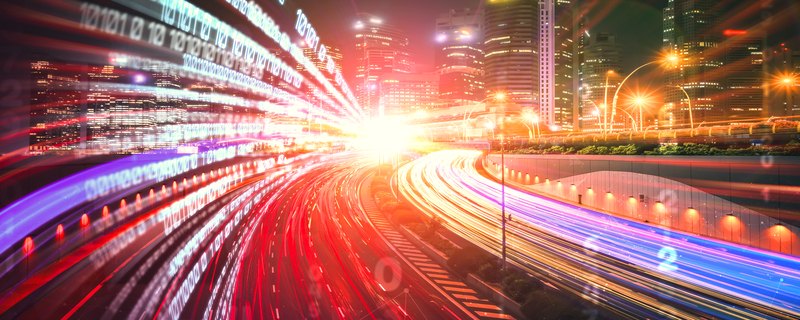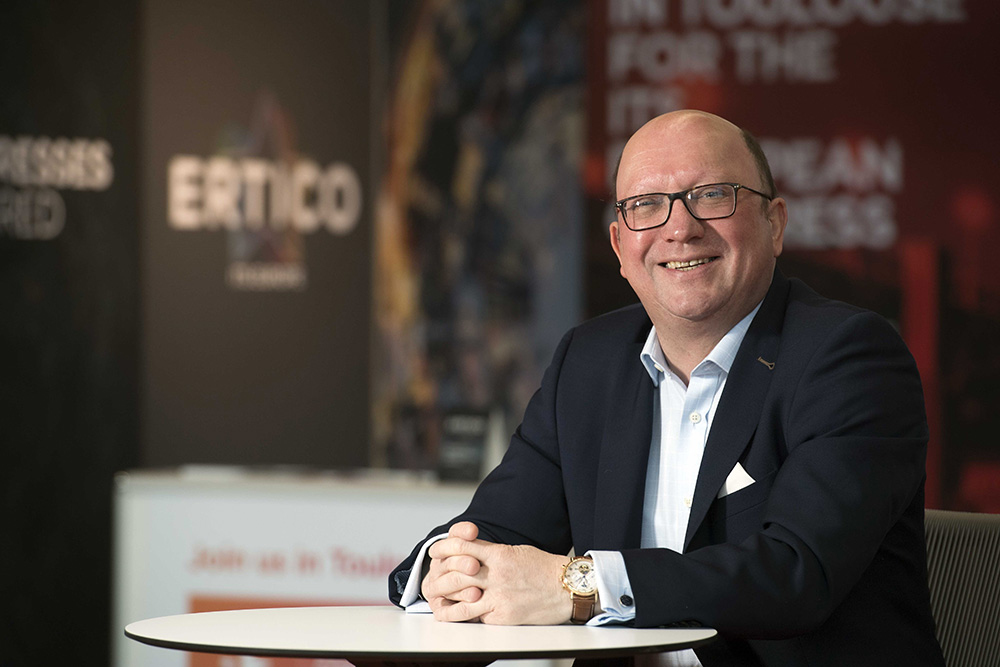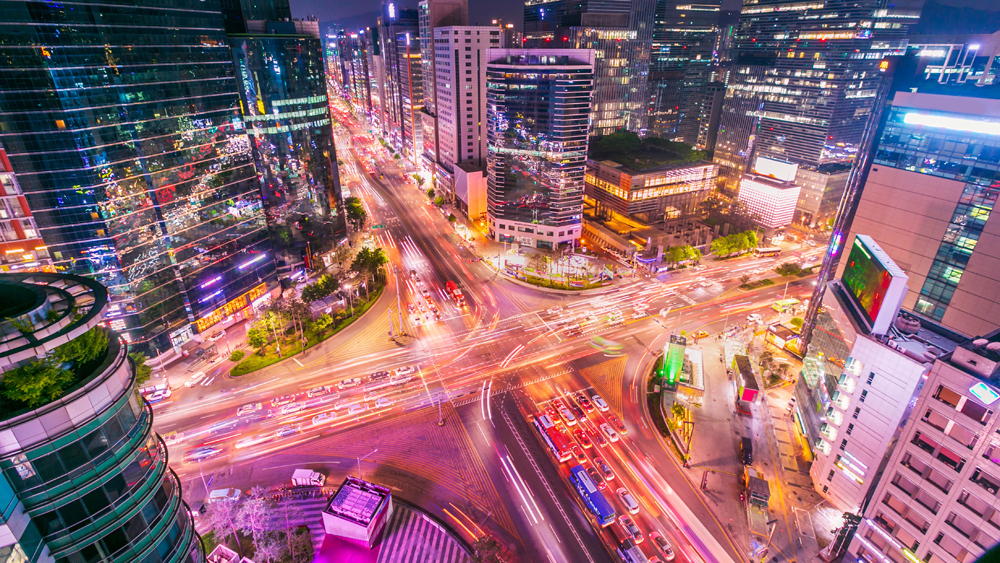
Digitalization and the increasing use of intelligence are the keys to making our transportation networks safer and faster. Together, they will also make journey experiences and the movements of goods more seamless and efficient, and improve environmental performance.
Making digitalization and intelligence possible requires a stable and well-defined architecture. This architecture does two things: from the various users’ perspectives, it provides the basis on which to develop the apps that will evolve their visions of the future; and, from Huawei’s perspective, as an ICT infrastructure provider, it provides the bridge with which to connect with its customers and vendors.
“It’s why we use the phrase ‘Seeing is believing’ as part of our marketing effort; customers can see the benefits we help to bring in terms of safety, efficiency and passenger experience. It also defines our digital and technological approach, which is encapsulated by ‘ABC’ — AI platform, Broadband and, finally, the Cloud, which incorporates both computing capabilities and storage, says Jacky Wang, vice president of Huawei’s Smart Transportation business unit.
Customer focus
“If — as we do — you supply a unified foundation, how do you adapt it to each industry sector’s requirements?” Wang asks. “Cooperation with our partners is important, as is our ability to adapt our own Large Model through the use of Large Natural Language and Computer Vision AI models.”
The choice of AI model is dependent upon application and desired effect. Computer Vision, for example, is used in the railway sector to look for wheel damage.
Detecting wheel damage provides a good illustration of the power of AI, as it can be an enormous task. In China alone, for instance, there are one million wagons on the railways. In the past, each day, a team of 6,000 people was responsible inspecting images of each set of rolling stock. The numbers involved are huge; a typical train of 50 wagons, and the need for around 80 image captures per wagon, means that 4,000 images per train are generated.
“AI and better connectivity benefit more than just the organization - they also have positive consequences for individuals”
With such high numbers of wagons and wheel sets, each member of the inspection team had to look at over 15,000 images each day. Huawei’s inspection algorithm looks at each individual image and searches for irregularities. It automatically removes the 95 percent of images which show within-specification wheels, leaving the human operatives to look at the rest. Over 15,000 images per day is reduced to around 200. The result is a huge efficiency improvement.
Another example of AI’s power and speed is stand optimisation at airports. A regular task is to arrange, for the following day, where aircraft will stop to embark and disembark passengers. At a major airport, this is a complicated exercise that typically takes a trained operative around four hours. The result can be rapidly and severely affected by changes in the weather, and accounting for the variations in landing times in real time can be a difficult - if not impossible - job for a human.
Huawei has created an AI algorithm that, instead of taking four hours, can complete the first-day planning exercise in five minutes or less; and, because it considers only the relative factors, it can provide a second-day, weather-amended version in a matter of seconds.
“That’s the advantage and strength of a digital foundation, and that’s why we work directly with partners — because they know their individual business areas and the types of apps that will benefit them,” Wang says.

Employee benefits
He notes that AI and better connectivity benefit more than just the organisation. They also have positive consequences for the individuals within it because, far from replacing staff, technology can improve their working conditions and so extend their careers.
An example is the use at southern China Airport of the DeepSeek AI platform together with Huawei’s FusionCube hypervisor/storage solution to give airport employees instant access to the 800 individual manuals which detail security procedures.
The power of better connectivity and faster data processing, meanwhile, is illustrated by the working day of a typical gantry crane operator at a major Chinese port.
The operator, who spends his working day transferring containers between vessels and trucks, begins his day by getting up at 4am and has a 40-minute bus commute to work. He then has to climb 40m up into a cab and work for four hours or more in 40-degree heat.
“Digital transformation is not just about technological transformation. It’s also about organisational reform”
“It’s an exhausting existence and by the time that man is 40 years old he needs to change his job,” Wang explains.
The alternative is 5G wireless combined with a fibre-optic communications network.
5G provides a low-latency transmission solution that moves the workplace from a cab in the air to an office that can be anywhere from two kilometres to 20km away. The corresponding signal latency of two to 20 milliseconds means that the operator can see what is happening with the crane near-instantly but now he can put on a suit and shirt and work in a white-collar environment; he can sit in an air-conditioned office and sip coffee at the same time as controlling up to six or eight gantry cranes simultaneously. His productivity as well as his employment and health prospects are improved dramatically.
It is an example, Wang notes, of an application that Huawei can readily duplicate from one seaport to another.
Coalescing around data
Within transportation, he continues, there are some clear trends.
“The points, or hubs, on our transportation networks, whether they be air or seaports, or any form of land terminal such as a railhead, are only going to get bigger and bigger. For example, in a city such as Beijing or Shanghai, an individual hub might handle one million movements per day, with a total of 10 million daily movements across the city as a whole.
“As well as extending their geographical influence out farther, hubs will also become more multimodal,” Wang states. “So, we can expect to see in one relatively confined space the more habitual intersection of air, high-speed train, metro, bus and private vehicles.
“On the individual rail, road and other routes that form the connections between the hubs, there are again some clear trends as well as some innate laws — such as that the value generated by a network increases with the square of network scale.
“We can expect to see in one relatively confined space the more habitual intersection of air, high-speed train, metro, bus and private vehicles”
“We cannot continue to deal with each of these separately. The challenge then becomes about coordinating those individual modes, and the four elements of people, goods, infrastructure and carriers, in order to improve speed and convenience.”
The flow of people and goods happens in the physical world but from a digitalization perspective it is all about using data to connect the physical elements to smooth business flows and help local economies. Wang says that this involves the convergence of five flows — passengers, goods, data, business and fun.
“The last one is important, because we should never forget that transportation is about livelihood and we need life balance,” he explains.

More than just technology
All of this sits within a wider context of what technology can bring to society. Instead of continuing to consider the obstacles to digitalization, Wang feels that we should instead look at the motivations.
“Transportation is a very traditional industry. Safety is always first and if you want to guarantee safety, you need to deploy more advanced technologies. The need to ensure safety while understanding how best to utilize transportation systems drives the need, for example, for more cameras and other dedicated sensors.
“At the same time, to realise digitalization and intelligence you need to unify siloed resources. Passenger service and security are different departments with different managers but you really need to centralise data to enable centralised decision-making.
“It is all about using data to connect the physical elements to smooth business flows and help local economies”
“That — changing the power distributions across different departments — results in something very different to legacy organisations. So, digital transformation is not just about technological transformation. It’s also about organisational reform.”
Nor should it be about the fear of being the first to embrace change, he notes, because change is already happening:
“In every sector of the transportation industry there are pioneers. Fundamentally, they want the same things: better employee experiences, which filter down into better passenger and goods services.
“For all of their applications, we provide the digital foundation and the dedicated software which services the apps is achieved through partnership. Pioneers such as Hong Kong, Shenzhen and Rotterdam provide the references that others can follow.”
Content produced in association with Huawei












